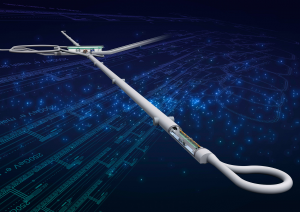A committee of Japanese scientists recommended the Kitakami mountains in Tohoku, Japan’s northeast region, as a candidate construction site for the International Linear Collider after evaluating it together with the alternate candidate of Sefuri in Kyushu, the southern island of Japan.
“It really was a tough process,” said Kiyotomo Kawagoe, co-chair of the ILC site evaluation committee of Japan and professor at Kyushu University, “especially because I have been working with the many people who are backing the ILC activities in Kyushu”. The site evaluation committee was set up in January 2013, and since then, they spent more than 300 hours to investigate both sites. “We are very confident with our evaluation result. It is the fruit of a very careful and fair evaluation process. We would like to express our deepest appreciations to everyone who understood and helped us promoting the ILC project,” Kawagoe said.
The evaluation was made on two aspects: the technical aspects necessary to build an accelerator, and the socio-environmental conditions on and around the proposed main campus area.
The evaluation committee was a team of seven physicists plus an expert on conventional facility studies, with adequate advice from accelerator and detector experts. Under the committee, two sub-committees of sixteen technical experts and twelve socio-environmental experts were separately created to provide expertise on issues such as the geological conditions, the environmental impact, the possible problems during construction and the social infrastructure of each candidate site.
The Kitakami site was recognised for its technical advantages in several areas. For example, the foreseeable difficulties in land acquisition or to obtain approvals and licenses were evaluated to be much lower. The Sefuri site is located close to a developed area and the existing infrastructures would cause delay in the approval process, for as long as two years, according to the evaluation. The Kitakami site also has a geological advantage in water drainage, which may lower the risk of a potential extension of the construction period. The estimated total length of the access tunnels, which will have an impact on the tunneling costs, were also evaluated shorter for the north site.
One of the site-specific issues that Kitakami bears is the seismic adequacy. The committee took time to investigate this matter. In general, underground facilities sustain less damage than surface structures, and Kitakami’s robust bedrock will help strengthening this effect. In fact, the data collected from Japan’s March 2011 earthquake show that the magnitude of the seismic acceleration was reduced by half to one quarter in the underground caverns from the those on the surface ground. The committee concluded that the site would be able to accommodate a seismic-resistant design that can withstand earthquakes larger than magnitude 9.0 level earthquake, the largest earthquake in Japanese history.
The committee also evaluated the socio-environmental context of the main campus areas in both candidate sites. A total of four potential main campuses, two from each candidate construction sites, were evaluated. Among those, one site in Sefuri was evaluated to be the best with excellent infrastructures, convenient access from downtown, and valuable experience in administrative services for foreigners living in Japan. However, convenient environment and cost of living tend not to go hand in hand. Therefore, the committee found not so much of difference on socio-environmental aspects in the overall assessment.
The committee examined technical and socio-environmental items in a comprehensive way, and came up with their conclusion. “The evaluation was made with a purely scientific and academic point of view. We didn’t make any political considerations whatsoever,” said Satoru Yamashita, a University of Tokyo physicist who chairs Japan’s ILC Strategy Council. “We received support from political and industrial communities that the site should be decided from the scientific view point,” said Yamashita.
The Science Council of Japan, who has been consulted by the Ministry of Education, Culture, Sports, Science and Technology (MEXT) to examine the scientific significance of the ILC, stated that it was premature for Japan to bid for being the host nation of the ILC, and that it should take a few years to discuss this within Japan and internationally. “The proposed plan to take a few years for the discussion is consistent with our original plan. We want to build an ‘international’ linear collider,” Yamashita says. “It now has to go through international negotiations and this should take at least a few years. The Japanese government can only officially decide to ‘go’ after establishing international partnerships.”
With the proposed location of the construction site, the project entered into the next stage. On 28 August, MEXT announced that they included ILC research expenses in next year’s budget request. This is the first official national budget explicitly for the ILC, and means a big step forward to realise the project.


Recent Comments